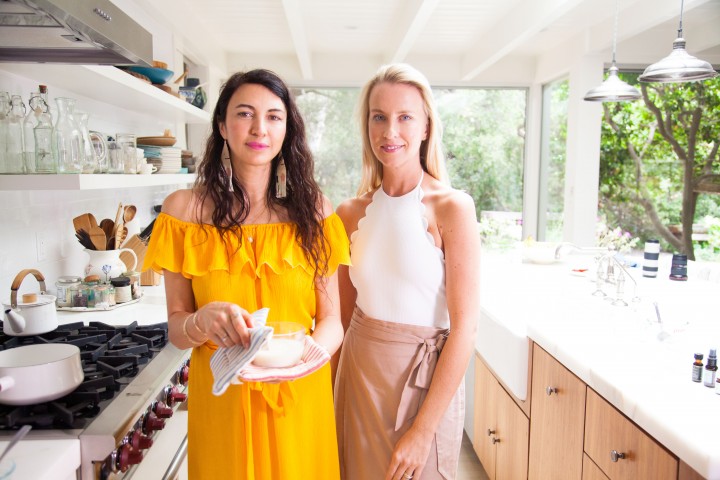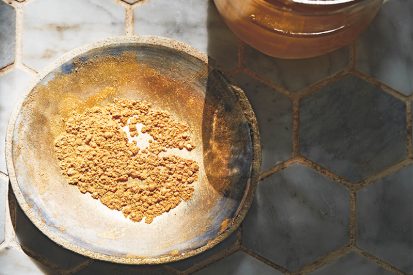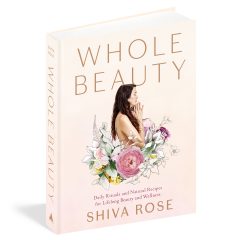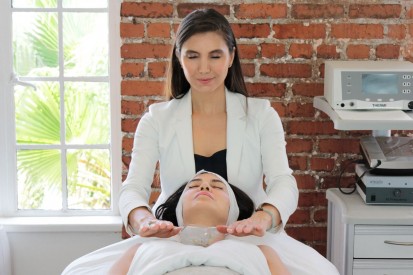Making Non-Toxic Sunblock with Marysia
Practicing safe sun with the swimwear goddess

With summer upon us we have to be prepared to keep safe from too much sun and also from toxic sunblock! There are many studies now linking certain ingredients in sunblock with hormonal disruption and devastating illnesses. Also, we are now seeing that sunblocks are destroying beautiful reefs in our beloved seas. Below the webisode, you can see some of EWG’s list of toxic ingredients found in some major sunblocks brands. Please be informed before covering your little vulnerable sprites in toxic creams!
It also is vital for us to get some vitamin D from the sun so being unprotected all the time isn’t always the best thing either. Vitamin D is a hormone and can have huge effects on your mood and immune system. I know many people that have changed their lives by getting more vitamin D in their system.
I was thrilled when the lovely Maria from my favorite swimwear line Marysia wanted to collaborate on a non-toxic sun block. We had a such a fun day dancing to some tunes, cooking up some clean sunblock, dressing in her beautiful designs, and having a few laughs. Take a look at the webisode below on how to make this nourishing treat for your skin. I use oils like raspberry seed oil, carrot seed oil, shea butter, coconut oil (naturally has SPF), beeswax, non-nano zinc oxide powder and more.
Happy Summer to you Roses . . .
EWG List of Toxic Ingredients Found in Most Sunblocks.
1. Oxybenzone
This is one of the most troublesome ingredients found in the majority of sunscreens. Its primary function is to absorb ultraviolet light. However, oxybenzone is also believed to cause hormone disruptions and cell damage that may provoke cancer. According to EWG:2
“…the chemical oxybenzone penetrates the skin, gets into the bloodstream and acts like estrogen in the body. It can trigger allergic reactions. Data are preliminary, but studies have found a link between higher concentrations of oxybenzone and health harms.
One study has linked oxybenzone to endometriosis in older women; another found that women with higher levels of oxybenzone during pregnancy had lower birth weight daughters.”
2. Retinyl Palmitate (Vitamin A palmitate)
Sunscreen products may actually increase the speed at which malignant cells develop and spread skin cancer because they contain vitamin A and its derivatives, retinol, and retinyl palmitate.
The problem occurs when this form of vitamin A is exposed to the sun (as opposed to when it is used in night cream, for example), which is why sunscreens that contain it should be avoided.
3. Fragrance
I caution against using personal care products that contain synthetic fragrance, as this term describes any number of harmful chemicals that do not have to be listed individually on the label. Some common “fragrance” chemicals include:
Parabens: Synthetic preservatives known to interfere with hormone production and release.
Phthalates: Another synthetic preservative that’s carcinogenic and linked to reproductive effects (decreased sperm counts, early breast development, and birth defects) and liver and kidney damage.
Synthetic musks: These are linked to hormone disruption and are thought to persist and accumulate in breast milk, body fat, umbilical cord blood, and the environment.
Tags:beeswax, carrot seed oil, coconut oil, fragrance, Marysia, oxybenzone, parabens, raspberry seed oil, retinyl palmitate, shea butter, vitamin D, zinc oxide















